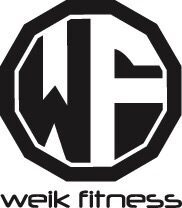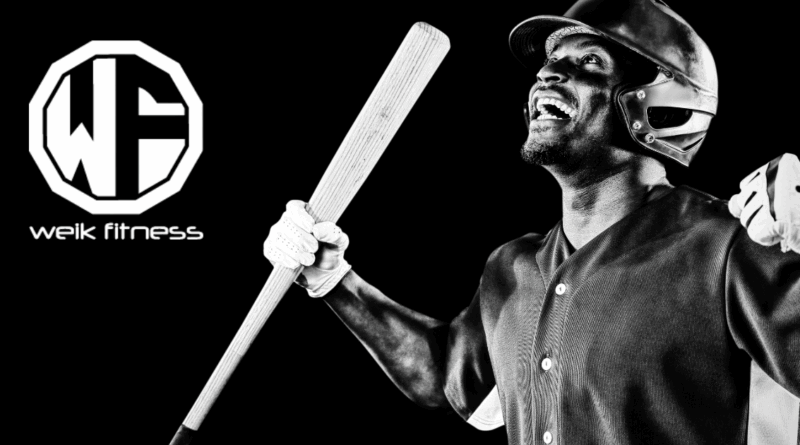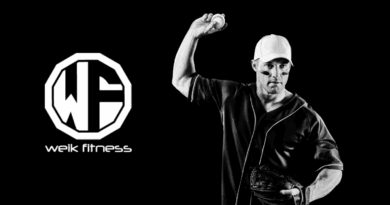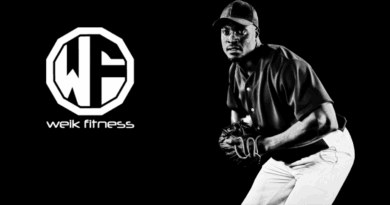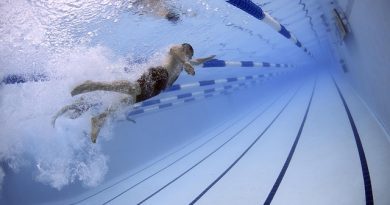How To Increase Bat Speed and Bat Swing Power
High bat speed creates batting power and exit velocity, which is the speed of the ball off the bat. Faster swings mean greater distance, louder contact, and more confidence at the plate.
If you’re struggling to hit the ball harder or farther, you’re not alone. That said, your problem may not be the type of bat you’re using. So, don’t run out and purchase a new bat thinking it’s going to get the job done.
Sure, the Easton Hype FIRE may be the craze in youth baseball, but if your bat speed and bat swing power aren’t up to par, it’s not going to make a difference.
As a youth baseball coach as well as being a certified strength coach and sports nutritionist (BS, CSCS, CPT, CSN), I enjoy sharing my knowledge to help both young and old athletes perform at their best.
I’ve been lucky enough to work with some of the best college and pro players as clients and help them experience a drastic change on the diamond. Hopefully, you can gain something from the tools and strategies I’ve used over the years.
This guide breaks down training, swing mechanics, and tools that can help every baseball player increase bat swing power and swing the bat faster, step by step.
Table of contents
- What is Bat Speed and Bat Swing Power?
- What Techniques Help Increase Bat Speed and Exit Velocity?
- Bat Speed Training Tools
- How Can Swing Mechanics and Technique Improve Bat Speed?
- What Are the Best Drills to Improve Bat Speed?
- What Are Effective Year-Round Strategies for Improving Bat Speed?
- Hit the Ball Harder, Swing the Bat Faster, Drive the Ball a Greater Distance, and Achieve Higher Exit Velocities
- Youth Baseball Bat Swing Speed FAQs
- Importance of Bat Speed References
Key Takeaways
- Bat speed, measured near the sweet spot, is a top driver of power. MLB stars such as Ohtani can top 75 MPH.
- Strength training, like squats and deadlifts, builds hips and core. Gains of about one mph across a season add up.
- Overload and underload drills, using bats at plus or minus 20 percent, can lift baseline speed by up to 8 percent.
- Tools such as Blast Gen 3 track plane, connection, and rotation. Over 83 percent of pro teams use this tech.
- Plan year-round. Off-season movement work, preseason mechanics, and in-season tracking protect every mph you earn.
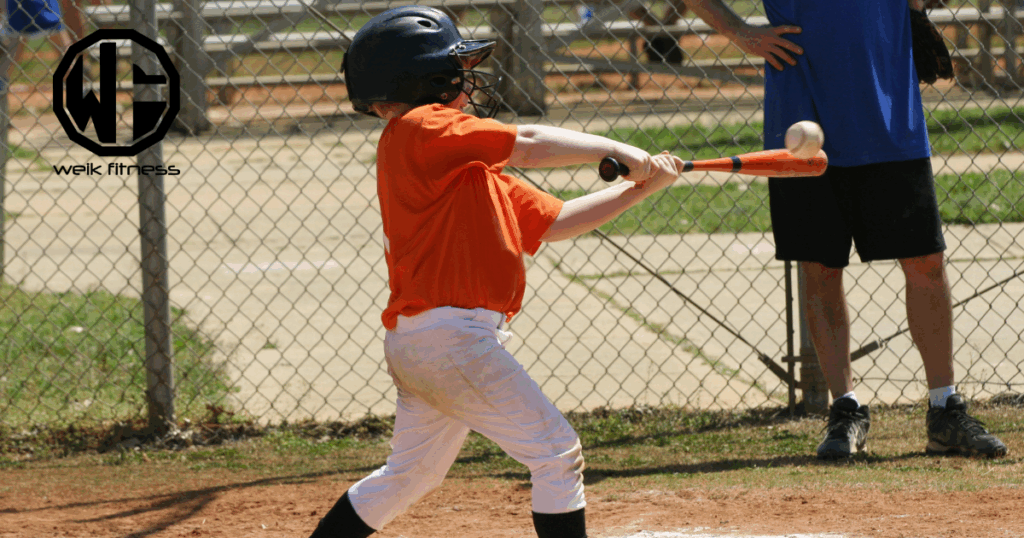
What is Bat Speed and Bat Swing Power?
Bat speed is how fast the bat moves through the hitting zone.
Coaches usually measure it at the sweet spot, about six inches from the tip. Higher bat speed raises exit velocity, which sends the ball off the bat faster and farther.
Major League Baseball stars like Shohei Ohtani and Giancarlo Stanton show what elite speed looks like, with swings over 75 MPH.
Bat swing power blends quick bat speed with strong biomechanics, which are the body movements that create energy, and clean swing mechanics. The right grip, balanced stance, and a suitable bat weight all support better contact and higher exit velocity.
Smart coaches who are active in baseball training use tools like Blast Motion sensors (I have zero affiliation with this brand) to track swing speed gains in swing training. This data helps youth baseball players and advanced hitters target specific fixes and measure progress.
If you don’t measure bat speed, you never know if you’re improving or seeing any bat speed increases. Bat sensors can help.
What Techniques Help Increase Bat Speed and Exit Velocity?
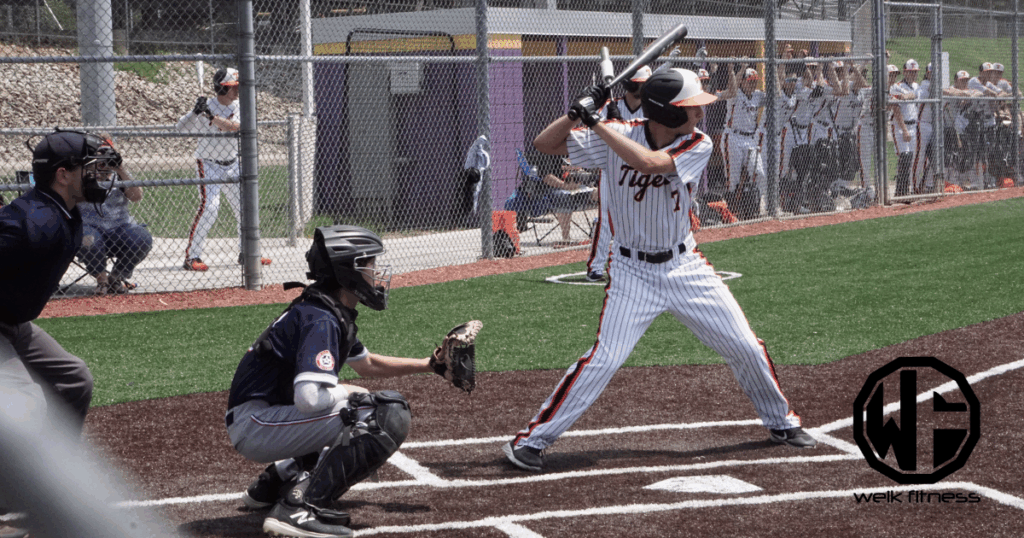
To improve your bat speed and have a quicker bat, train the body, sharpen the pattern, and practice with intent.
The right training can make all the difference (it doesn’t matter if you’re a baseball or softball player). The goal is to be able to go through your swing and move the bat fast.
Training sessions can help.
A simple plan blends strength work, speed drills, and clear feedback. Start small, add load or speed slowly, and keep your mechanics crisp.
How Does Strength Training and Resistance Training Improve Bat Speed?
Weight training builds the engine behind a powerful swing.
Work the hips, core, upper body, and forearms, since these muscle groups drive the barrel of the bat. Squats and deadlifts build force in the legs and hips. Bench presses strengthen the chest and shoulders. Wrist curls and forearm work help the barrel whip through the zone.
Even a one mph increase can change a season.
Use compound lifts two or three days per week, with good form and solid rest. Many athletes see steady gains across the winter as strength and technique grow together. If pain shows up, stop and talk with a coach or healthcare professional.
“Strong legs create batting power. Quick hands deliver it to the ball.” — a veteran baseball hitting coach whose name slips my mind.
What Plyometric Exercises Help Your Baseball Swing and Build Bat Swing Power?
Plyometrics train fast force. Box jumps, jump squats, and lateral bounds teach your legs to apply power quickly from the ground. This helps transfer energy up the chain into the swing.
Medicine ball slams and rotational throws build core rotation, which turns hip drive into maximum bat speed. Pair these with flexibility work to protect the hips and back. Two or three short sessions per week can sharpen batting power without heavy fatigue.
Bat Speed Training Tools
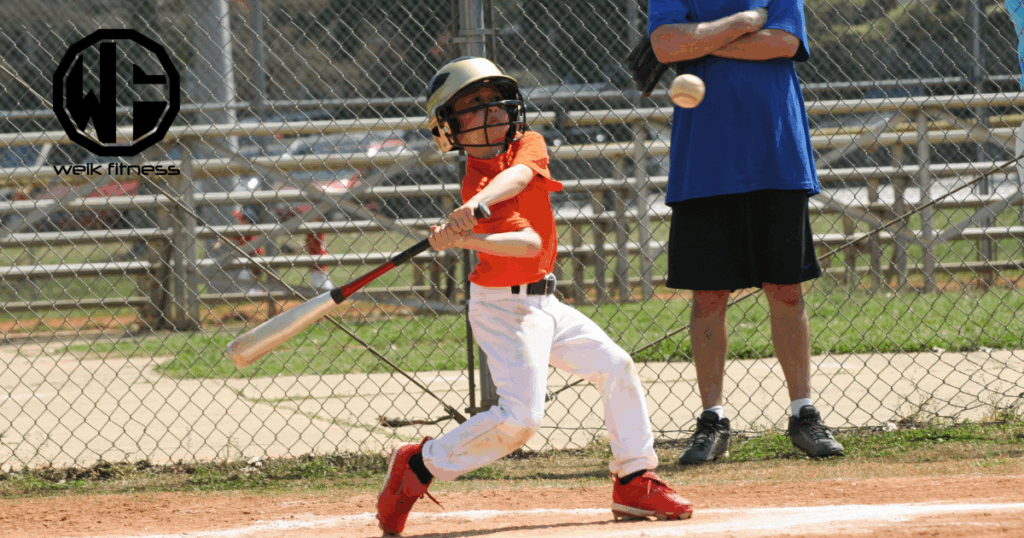
Training aids help you swing faster, measure progress, and target weak links. The best tools create feedback you can act on right away. Two standout options are weighted bats and swing sensors.
How Do Weighted Bats Help Increase Your Bat Speed?
Weighted bat training uses a heavy bat and a light bat to teach strength and speed. Pick a heavy bat at about 20 percent above your game bat, and a light bat at about 20 percent below it. Follow a simple sequence: heavy, game, light, then repeat.
RELATED: How To Increase Baseball Throwing Speed and Pitch Velocity
Do three to five rounds per session for a total of 100 to 125 swings, three or four days per week. The heavy bat builds strength in the hands, forearms, and core. The light bat teaches faster moves without losing your swing mechanics. Many players report up to an 8 percent rise in baseline speed with steady practice.
Focus on grip pressure, stable posture, and a short, direct path. If you feel sharp pain, reduce volume, and ask a qualified coach for help.
What Are the Best Swing Analysis Tools to Check Swing Speed and Mechanics?
Blast Gen 3 Swing Analyzer is a great option for baseball and softball hitters who want clear data (I have no affiliation with this company). The sensor pairs with a mobile app and delivers real-time feedback on plane efficiency, connection, and rotation. Color zones make it easy to see strengths and gaps.
Over 83 percent of pro teams use Blast tech in player development. The app also allows air swings, so you can train without a ball or field. Coaches can manage multiple athletes and review video alongside metrics. Players and parents can view progress, compare to pro-level benchmarks, and set practical goals.
What Are Some of the Best Bats for Youth Baseball Players?
Below is a list of some of the hottest bats on the market right now that are USA and USSSA approved:
- Easton Hype FIRE
- Louisville Slugger Supra
- Easton The Dub
- Rawlings ICON
- Marucci CATX
- Warstic Bonesaber
- Louisville Slugger Select PWR USA
- Victus Vibe Pencil Bat
How Can Swing Mechanics and Technique Improve Bat Speed?
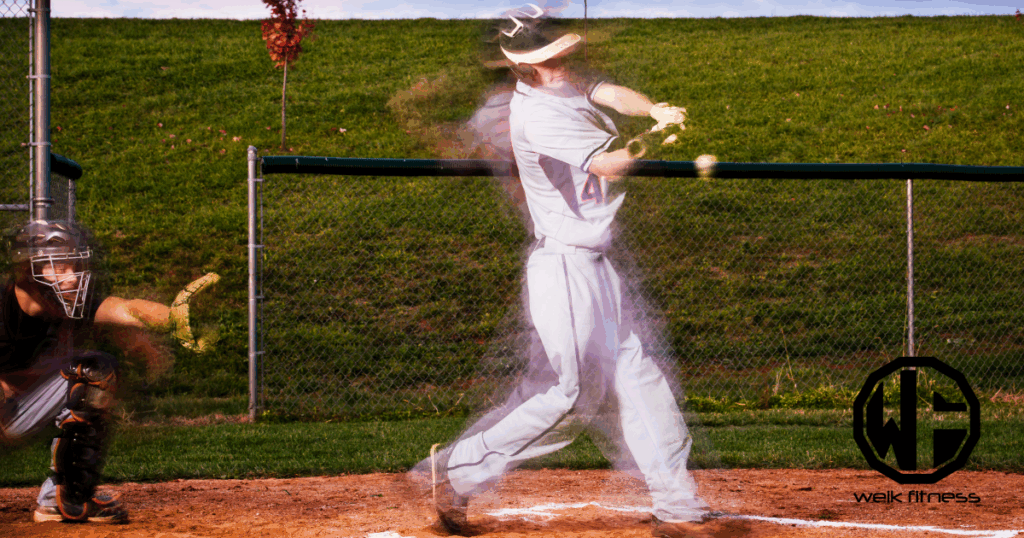
Mechanics control how fast the bat moves and how well energy transfers to the ball. Clean movement patterns reduce wasted motion and tension. Focus on balance, posture, and a simple, repeatable move to the ball.
What Is the Proper Bat Path for Maximum Batting Power and Faster Swing?
Keep the bat path short and direct. Work slightly up through the zone to match pitch plane. A small upward angle, not a big loop, improves contact quality and sends the ball with higher exit velocity.
RELATED: How To Minimize the Risk of Common Baseball Injuries
Start with a strong base. Fire the hips, then rotate the core to deliver the hands. Grip the handle in the fingers, not deep in the palm, for fast barrel control. Use sensors or video to check that the barrel stays on plane for as long as possible.
How Can Sequencing and Timing Be Optimized for Better Swings?
Good sequencing means the parts move in the right order. Legs load, hips turn, torso follows, then the hands release. This pattern pushes energy from the ground to the barrel.
Train timing with tee work, front toss, and mixed-speed batting practice. Add a timer goal to promote intent, such as fast swings above your normal pace. Sensors and video help you spot late hips or early hands.
Small fixes here can unlock a faster, cleaner move.
How Do Hip and Core Engagement Affect the Swing?
The hips are the engine of the swing. Strong rotation creates faster bat speed, and the core transfers that force to the hands. Resistance band rotations, anti-rotation holds, and medicine ball throws build this link.
A stable core supports balance as weight shifts from back foot to front foot. Weak hips or a soft core slow energy transfer and shorten contact. Blend strength, mobility, and plyometrics for a stable, powerful turn.
What Are the Best Drills to Improve Bat Speed?
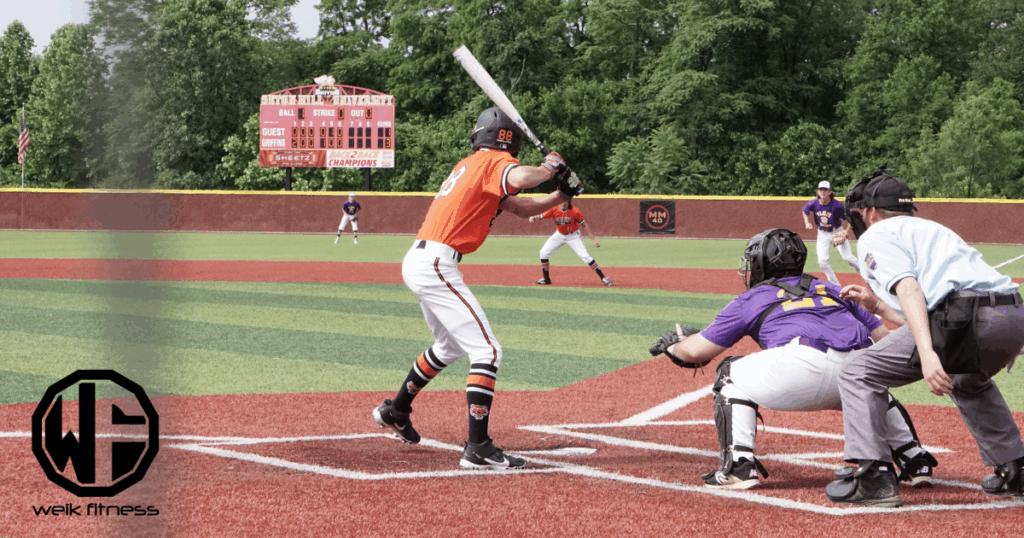
Simple drills to increase bat speed work best. Aim for high intent and clean form. Use tools that give feedback, then adjust fast.
- Overload and underload bat sequence, heavy to game to light.
- Air swings with a sensor for daily reps and easy tracking.
- Short tee sets, five to eight balls, with a speed goal.
- Medicine ball rotational throws, focus on fast hips.
- Band-resisted turns, light load, crisp speed.
Pick two or three drills per day. Stop each set the moment speed drops off. Quality beats quantity.
How Do Underload and Overload Bat Drills Work?
This method pairs heavy and light bats to train both ends of speed. A heavy bat, about 20 percent above game weight, builds strength with controlled swings. A light bat, about 20 percent below, trains quick hands while keeping mechanics the same.
A sample routine: 3 heavy swings, 5 game swings, 3 light swings. Repeat that set 6 to 8 times. Total volume lands near 100 to 125 swings in one session, three to four times weekly. Many athletes see up to an 8 percent rise in average bat speed across a cycle.
Use a steady stance and consistent grip. Track speed to verify progress. If fatigue kills form, cut the set short and rest.
What Are Dry Swing Interventions?
Dry swings are bat swings without hitting a ball. Athletes use a regular bat, a weighted bat, or a lighter bat to groove mechanics. Research on dry swings with different weights shows mixed results for speed change across groups.
For younger players, avoid heavy or very light bats during warm-ups. These can change attack angle and timing. Dry swings work well when paired with strength work, movement training, and sensor feedback. This keeps the focus on both speed and clean form.
What Are Effective Year-Round Strategies for Improving Bat Speed?
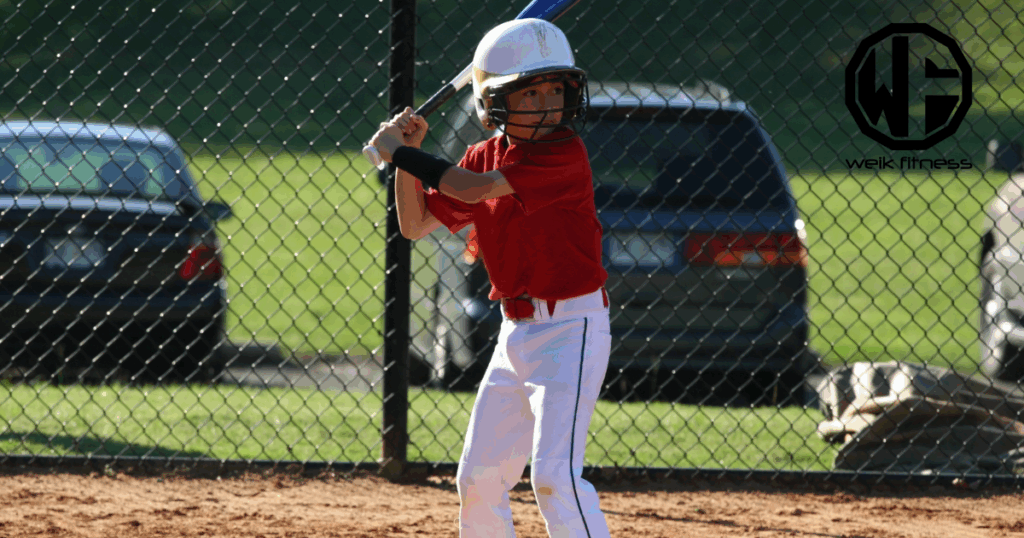
Year-round planning turns small gains into lasting performance. Use phases with clear goals. Track data so your plan adjusts to your needs.
What Foundational Work Should Be Done in the Off-Season for a More Powerful Swing?
Start with movement quality and base body strength. Use bodyweight work, resistance bands, and light dumbbells. Build hip mobility and core stability to set up later power.
RELATED: Best Baseball Workouts — Strength Training & Exercises
Add plyometrics two or three days per week, such as box jumps and squat jumps. Keep cage sessions low stress early, using bat speed trainers with smooth, full swings.
Track monthly speed and exit velocity. Fix mechanical flaws before preseason intensity rises. If pain or nagging issues appear, seek help from a qualified coach or medical provider.
Leverage hitting drills, such as ball toss and even tee work. You can also work with a heavier bat, like common training aid bats, to build swing speed and strength in the off-season.
How to Maintain and Adjust Bat Speed During the Season?
Once you develop bat speed, you want to keep it, right? You spent all that time training to improve a powerful bat. The last thing you want to do is lose it during the season.
Early season, protect speed with short, high-intent sessions. Use sensors to flag even a one mph drop. Blend low-stress days with live reps so fatigue stays under control.
As games stack up, shift some attention to contact and approach. Do not lose intent, though, keep a few fast sets each week. Adjust volume and intensity based on your data, feedback from your baseball coaches, and how your body feels that day.
Hit the Ball Harder, Swing the Bat Faster, Drive the Ball a Greater Distance, and Achieve Higher Exit Velocities
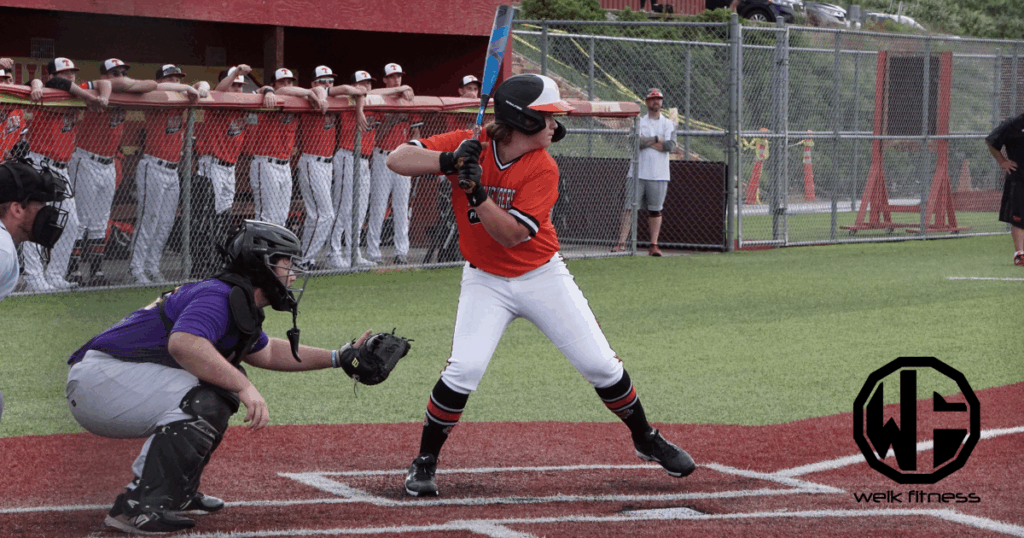
Bat speed is the engine behind every loud hit. Build it with strength training, clear swing mechanics, and targeted drills.
RELATED: Baseball Nutrition Guide — What Should Baseball Players Eat?
Use tools such as a weighted bat and a swing sensor to measure gains and guide practice. Stay patient, track progress, and protect your health along the way.
With steady work, you will see an increase in bat speed, raise exit velocity, and turn more swings into real damage on game day.
Youth Baseball Bat Swing Speed FAQs
Bat speed isn’t just about swinging faster; it’s the foundation of hitting with more power and driving the ball farther. Improving bat speed involves a combination of strength, technique, and timing, which together help you make solid contact and boost your overall results at the plate.
Some coaches argue that focusing only on bat speed ignores other skills like control or accuracy. Critics say that while increasing your swing velocity matters, proper form using a bat also plays a key role in consistent success during games.
Improving bat swing power requires targeted drills and exercises designed to build muscle strength specific to batting movements. Using weighted bats safely, practicing explosive swings, and refining grip technique all contribute to better results when you want to increase your bat velocity.
Bat speed but also balance matter equally for top performance; developing both lets you hit harder without losing precision. Training routines should focus on building quickness while maintaining smooth mechanics so every time you step up using your favorite stick, you’re ready for any pitch thrown your way.
Importance of Bat Speed References
- https://www.justbats.com/blog/post/bat-swing-speed/
- https://ballparksofamerica.com/swing-faster-hit-harder-home-drills-to-increase-bat-speed-for-youth-baseball-players/
- https://kineticsmp.com/blog/plyometric-training-for-baseball-players-benefits-best-practices
- https://brucebolt.us/blogs/news/how-to-increase-bat-speed
- https://blastmotion.com/products/baseball/
- https://www.princetonmedicine.com/blog/powering-up-your-swing-the-importance-of-hip-strength-in-baseball-hitting-mechanics
- https://www.baseballthumbguard.com/blogs/thumbpro-pros/how-to-increase-softball-bat-speed
- https://caliburnbats.com/blogs/training/boost-your-bat-speed-the-overload-underload-trainer-bat-program
- https://pmc.ncbi.nlm.nih.gov/articles/PMC12213483/
- https://www.hayliemccleney.com/blog/hitting-5-exercises-to-increase-your-bat-speed
- https://www.drivelinebaseball.com/2025/02/the-complete-guide-to-driveline-bat-speed-trainers/
- https://www.drivelinebaseball.com/2021/08/hit-the-ball-harder-how-to-increase-your-bat-speed/
- https://www.researchgate.net/publication/26294276_Contributing_Factors_for_Increased_Bat_Swing_Velocity


*Disclosure: This article may contain affiliate links or ads, which means we earn a small commission at no extra cost to you if you make a purchase through these links. These commissions help support the operation and maintenance of our website, allowing us to continue producing free valuable content. Your support is genuinely appreciated, whether you choose to use our links or not. Thank you for being a part of our community and enjoying our content.
PLEASE CONSIDER SHARING THIS ON YOUR SOCIAL MEDIA TO HELP OTHERS LEARN MORE ABOUT THIS TOPIC.
